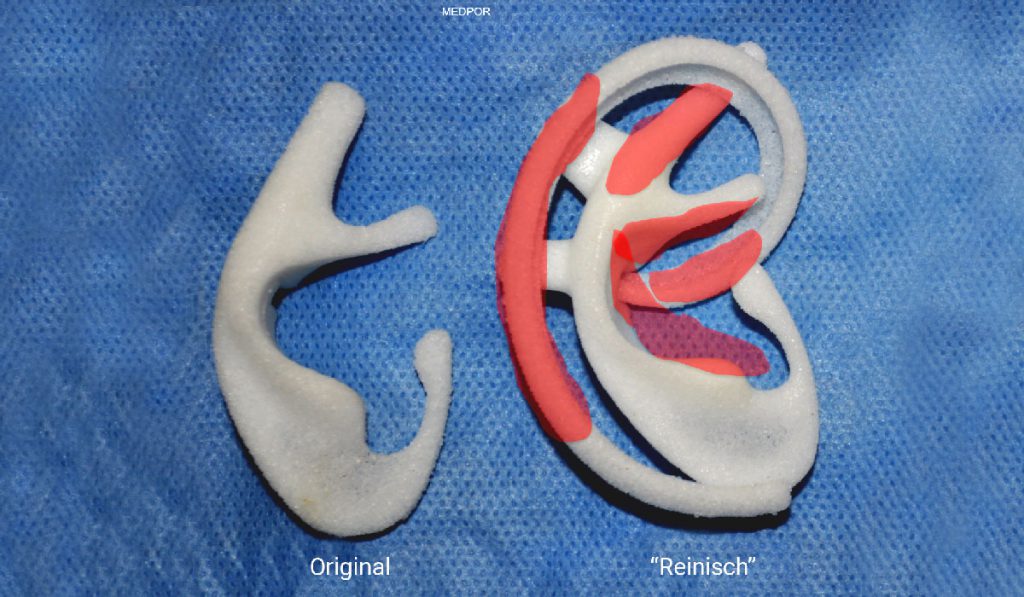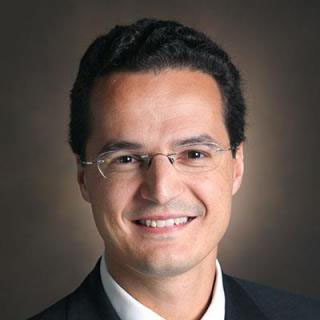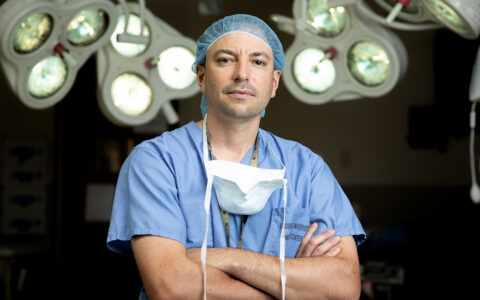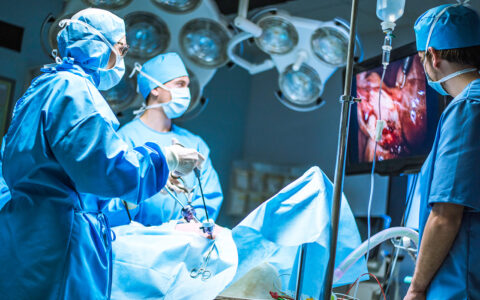Porous high-density polyethylene (pHDPE) implants offer an increasingly reliable, adaptable option for microtia and atresia reconstruction, says Scott Stephan, M.D., a facial and plastic reconstructive surgeon and director of the Microtia and Atresia Clinic at Vanderbilt University Medical Center. Stephan is pioneering several innovative uses of pHDPE implants at Vanderbilt. These include 3D-printed implants and advances in complex, combined atresia-microtia (CAM) surgery.
“The gold standard has been rib reconstruction for the last half-century, but the pendulum is swinging — quite rapidly,” Stephan said. “The recent advances in porous polyethylene have been a paradigm shift in terms of consistency and results.” First marketed as Medpor in 1983, pHDPE implants are now produced by multiple companies.
In the 2018 edition of Facial Plastic Surgery Clinics of North America, Stephan and co-author John Reinisch, M.D., outline a number of advantages of today’s pHDPE implants over autologous rib or other, non-pHDPE alloplasts. pHDPE implants can offer earlier reconstruction, fewer procedures, avoidance of donor site morbidity, shorter learning curves and improved size and contour match.
3D Printing
“A ‘perfect’ ear may not meet the needs or goals of our patients.”
Stephan and colleagues at the Microtia and Atresia Clinic have begun exploring use of 3D printing to augment standard model implants. “One exciting application of 3D printing is to customize standard pHDPE implants,” Stephan said. “Many microtia and atresia patients have associated craniofacial abnormalities, so that is a big issue.”
Perhaps counterintuitively, the goal of an augmentation is often “irregularization” of a standard implant. “Think about that: a ‘perfect’ ear may not meet the needs or goals of our patients,” Stephan said. “The 3D printing allows us to augment a standard implant so it truly fits that unique patient.” As a reconstruction material, pHDPE can be modified easily with a scalpel or by soldering on additional pieces.
3D printing can be used to create entirely custom implants. “In the past year, we’ve created custom implants for several patients based on CT data of their opposite ear,” Stephan said. “For those patients with unilateral microtia, it’s an exciting option that’s here right now. It’s happening.”
One advantage of a 3D-printed, custom implant may be added strength. Theoretically, a single structure not requiring fusion will be stronger than a fused two-piece implant.

Combined Atresia-Microtia Reconstruction
Traditionally, patients with CAM requiring outside ear reconstruction with pHDPE and formation of a new ear canal will face two separate procedures. Canalplasty is typically followed by a later outside ear repair with pHDPE. In the past decade, however, a handful of specialized microtia and atresia clinics including Vanderbilt’s have begun to offer CAM surgeries using preformed pHDPE implants as a single, outpatient procedure.
“It’s a long day,” said Stephan, who performs CAM surgeries in collaboration with Vanderbilt atresia and canalplasty specialist Alejandro Rivas, M.D. “However, it allows that child or adult to accomplish both their goals in one surgery. For pediatric patients, in particular, it means we can deliver the external ear reconstruction and the hearing restoration before they reach kindergarten or the first grade, ideally. There are a variety of psychosocial benefits to that earlier approach.”
Stephan notes that the CAM approach also offers less time in recovery, less exposure to anesthesia in total and a reduced care burden for patients and their families. “Our center has focused on improving the consistency and predictability of our results. For example, with CAM surgeries, we have developed new techniques for joining the neo-canal with the bowl of the external ear that heals faster and therefore prevents it from closing down — a problem that has plagued many in the past.”
Global Microtia-Atresia Patient Community
As microtia and atresia patients around the world gain more access to online research, images and videos, Stephan anticipates increasing interest in the options now available at specialty centers like Vanderbilt’s.
“With increased connectivity around the globe, patients are coming from farther to seek the best ear results,” he said. “So, with porous polyethylene reconstructions in particular, patients are coming from Europe because the European body has not yet universally embraced this approach. It’s just that the results we are attaining in microtia reconstruction are so tangible — can be seen so clearly in a photo or video—as opposed to some medical conditions.”
Availability of pHDPE implants internationally will grow, Stephan believes, as the technology and surgical expertise become more widely disseminated: “The conversation changes, but it will take time to reach locations across the country and around the world.”





